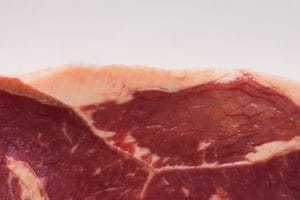The Vancouver Sun
By David Fisman And Sarah Elton
Canadians, this week, are a little nervous around beef. For good reason.

“Verotoxigenic” E. coli (VTEC), which are often a strain known as E. coli O157: H7, are yet again causing an outbreak, with numerous Canadians sickened by tainted beef. Now what’s being called the country’s largest food recall is unfolding. We’re being told not to eat the steaks, hamburger and other beef products handled by Alberta’s XL Foods that have been sold in supermarkets across the country. Meanwhile, the federal government is under attack for not having protected our food from this bug, which generally causes bloody diarrhea and an associated blood and kidney disorder.
It will likely be many weeks before epidemiologists have a clearer picture of what’s happening. However, this is by no means a unique event.
In 2006, VTEC-tainted spinach from California caused an outbreak reaching into Canada. This past summer, at least 11 individuals in New Brunswick were sickened by VTEC-tainted lettuce: the outbreak strain matched a strain causing disease in both Quebec and California, suggesting a much larger North American VTEC outbreak remained unidentified. In 2009, VTEC-contaminated cookie dough caused a massive outbreak in the United States, sickening more than 80 people across 30 states.
VTEC is not the only culprit; other food-borne pathogens have infected processed goods, too. A Georgia peanut butter plant shipped salmonella-tainted products across North America in 2009 causing more than 600 cases of illness and, in 2007, a poultry pie from a plant in Illinois caused more than 230 people to get sick in 34 states.
The common thread in these outbreaks is contamination of food somewhere between the farm, the processing plant and the plate – and serious ramifications have rippled out across the great distances that our food travels. Outbreaks like these prompt calls for traceability and an increase in food safety control for large producers.
There is, however, another way to build a safer food system: shorten the supply chain. Or, in the words of the good food movement, go local.
We have created an industrial food system that is a vast web of interactions between countless actors that has spiralled out of our control, as outbreaks like these prove. Without clear data documenting that large-scale centralized food production is safer than local food distribution, we argue that, at the very least, the benefits of industrial food are offset by this inherent potential for large, geographically dispersed, difficult to identify, and hard-to-control outbreaks. Furthermore, the challenges of producing massive quantities of food in centralized locations for widespread distribution may enhance disease risk. Consider the fact that antibiotics used to promote rapid growth in feedlot-grown cattle may increase the risk of those same cattle carrying VTEC in their intestines. Other infectious threats can also be linked to the economics of centralized food production on a massive scale.
The long-range and complex web of food distribution in Canada makes identification of outbreaks extremely challenging. Recent studies by the Public Health Agency of Canada suggest less than five per cent of diarrhea cases that should be reported to public health authorities are reported, making it hard to identify an outbreak or cluster when one occurs. It becomes even more challenging when cases are spread over many jurisdictions – if you have a handful of cases in Alberta, another in Quebec and the rest in Ontario, it’s harder to see the pattern that triggers alarm bells. If an outbreak is detected, control requires co-ordination across levels of government.
In multinational outbreaks, which we’ve seen before, this may require cooperation and sharing of information between countries. In the case of the poultry pie outbreak, a single plant in Illinois made products sold in a variety of jurisdictions under no fewer than nine brand names. Finally, the international movement of food makes meaningful inspection difficult; one need only look at tainted food scandals in China to realize countries vary widely in their food inspection regimes.
Sure, local food can make you sick too, but a shorter supply chain means fewer opportunities for things to go wrong. Furthermore, outbreaks of a given size should be more visible to public health authorities, who would then be empowered by public health statutes to take direct action to protect the public.
A local food system doesn’t mean tossing out food-safety precautions adopted by the industrial system. We can still refrigerate, practice good hygiene and closely monitor our food along the road to the consumer. Pasteurization predates the industrialization of food. It’s just that keeping our food safe is easier, with fewer opportunities for something to go wrong, in a more human-scale food system. And if things do go off the rails, then fixing it should be simpler.
A sustainable local food system won’t make food-borne illness go away, but it could help make our food a whole lot safer.
Dr. David Fisman is an internist with an interest in infectious diseases. Sarah Elton is the author of the national bestseller Locavore.

